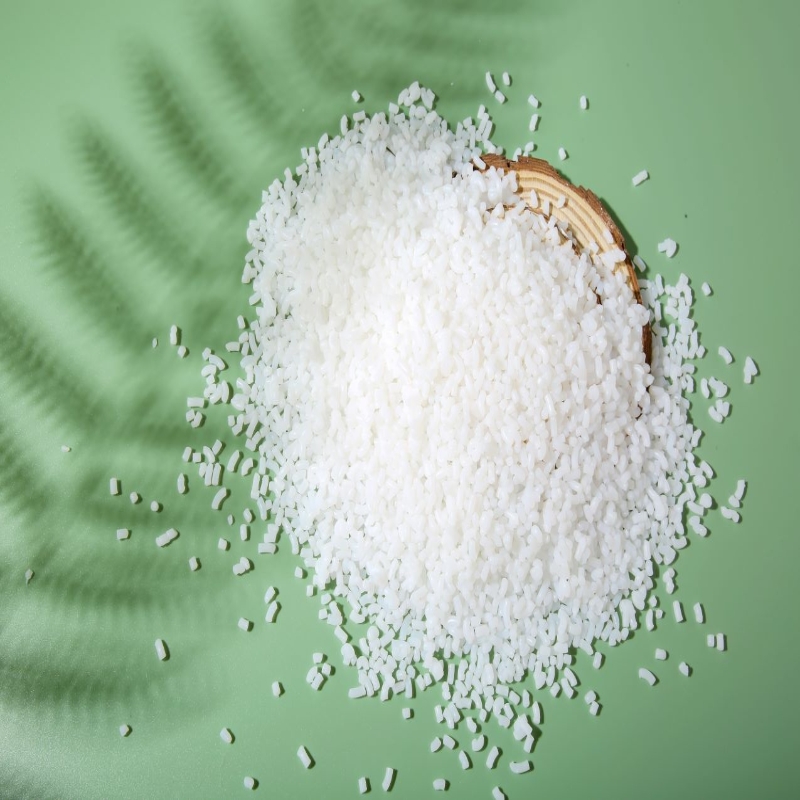-
Categories
-
Pharmaceutical Intermediates
-
Active Pharmaceutical Ingredients
-
Food Additives
- Industrial Coatings
- Agrochemicals
- Dyes and Pigments
- Surfactant
- Flavors and Fragrances
- Chemical Reagents
- Catalyst and Auxiliary
- Natural Products
- Inorganic Chemistry
-
Organic Chemistry
-
Biochemical Engineering
- Analytical Chemistry
-
Cosmetic Ingredient
- Water Treatment Chemical
-
Pharmaceutical Intermediates
Promotion
ECHEMI Mall
Wholesale
Weekly Price
Exhibition
News
-
Trade Service
Wetting dispersants play a very important role in the coating manufacturing process, in the water system, due to the high surface strength of water, the wetting of powder is very difficult, in order to effectively deflocculate and stabilize pigment fillers, wetting dispersants contain high-efficiency pigment affinity groups, which contain a large number of amine-based groups, will react with epoxy resin, in the long-term storage process caused stability problems.
Common wetting dispersants are added directly to the water-based epoxy emulsion,
40 degrees C storage after 7 days of collation
problem is solved by DISPERBYK-2012, which shows good long-term storage stability in different epoxy emulsions (Figure 2)
.
Figure 2, different wetting dispersants are added to the epoxy emulsion, stored at 40 degrees C 30day (epoxy emulsion: dispersant: 10:1),
left: epoxy emulsion WE-1; right: epoxy emulsion WE-2,
during storage, if the pigment produces flocculation, the viscosity of the coating will also change significantly. The most important function of wetting dispersants is to disperse and stabilize pigments and avoid flocculation in the storage process.
different dispersants, the viscosity changes before and after coating storage
(storage conditions: 40 degrees C, 7day). Another major role of Blank in wetting dispersants
wetting dispersants is to reduce the viscosity of the system, thereby improving flow and leveling and also improving deboping properties. DISPERBYK-2012 uses controlled polymerization technology, molecular structure contains different pigment affinity groups, organic pigments and inorganic pigments have good adhesion properties.
the preparation of water-based coatings, the grinding process is usually used: the pigment concentrate is prepared first, and then the emulsion is added for painting. Pigment concentrates generally do not contain emulsions (most water-based emulsions cannot withstand high-strength shearing), in which case it is very difficult to prepare concentrates with high pigment concentrations due to their high viscosity. So what is the properties of DISPERBYK-2012 in the concentrated slurry of inorder pigments?
, DISPERBYK-2012 still exhibits good viscous properties in concentrated slurry with 70% inororable pigment.
competition, 70% pigment DIS-2012, 70% pigment
If pigment content continues to increase, when pigment content increases to 75%, a single wetting dispersant is generally difficult to play a good anti-adhesive effect. When selecting the main dispersant, you can then choose to use with a small amount of medium and low molecular weight auxiliary dispersant, when a wetting agent is used. This results in a more stable system and a lower viscosity.
recommended with DISPERBYK-2012 with wetting agents such as: DISPERBYK-199, added wetting agent, inorger pigment water-like concentrates significantly reduced viscosity, abrasive pulp operability is also greatly improved
With the addition of auxiliary dispersants, pigment concentrated slurry viscosity is significantly reduced
flash rust is a very easy problem in the construction of water-based anti-corrosion coatings, in water-based epoxy primers will usually be added to the anti-flash rust agent, but most of the current anti-flash rust additives to some extent will reduce the long-term corrosion resistance of the coating. There are many reasons for flash rust, including substrate, paint film thickness, curing temperature and humidity, but also the effects of the formula itself, such as wetting dispersant selection, also likely to lead to the formation of flash rust.
, as far as the paint formulation itself is concerned, the first thing to do is to avoid the disadvantages that cause flash rust. DISPERBYK-2012 added to the water-like epoxy varnish, will not affect the system's anti-flash rust performance, and even the formation of flash rust has a certain degree of inhibition.
dispersants are added to water-based epoxy varnishes and applied to polished galvanized plates
wet dispersant DISPERBYK - 2012 in water-based epoxy systems
there are four advantages
First, DISPERBYK - 2012 is widely available and can be used in almost all different epoxy emulsions, reducing the variety of dispersants of coating manufacturers.
second, organic and inorganic pigments have good adhesion-reducing properties, thereby increasing the pigment content of concentrated slurry, with a very small amount of moisturizers, such as DISPERBYK - 199, can be used for high concentrations of pigment concentrates.
, there is no negative impact on the flash rust problems commonly found in water-like systems.
, VOC content is below 1500 ppm, meeting increasingly stringent regulatory requirements.
.







